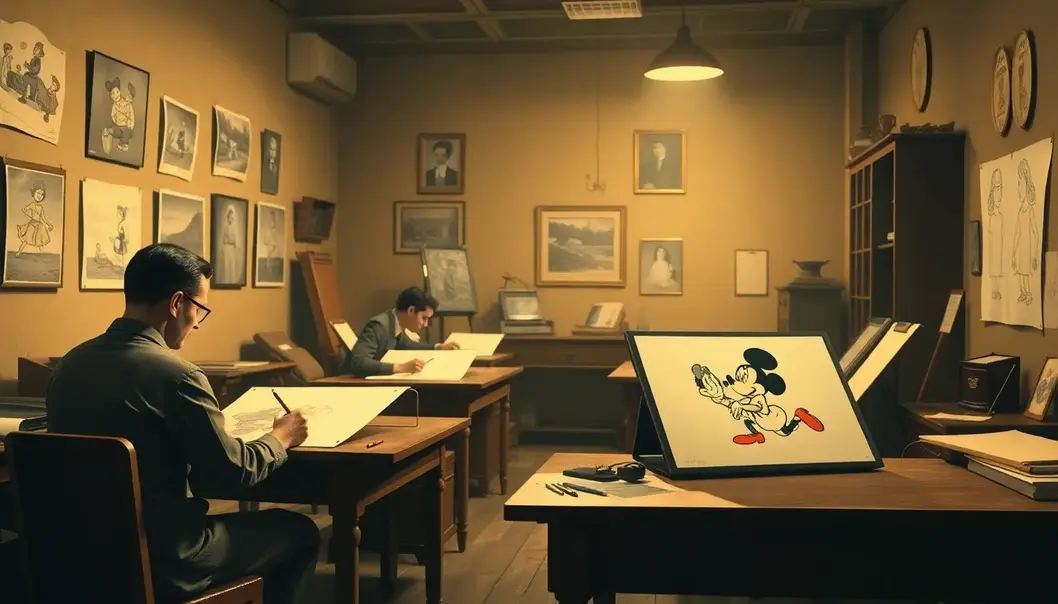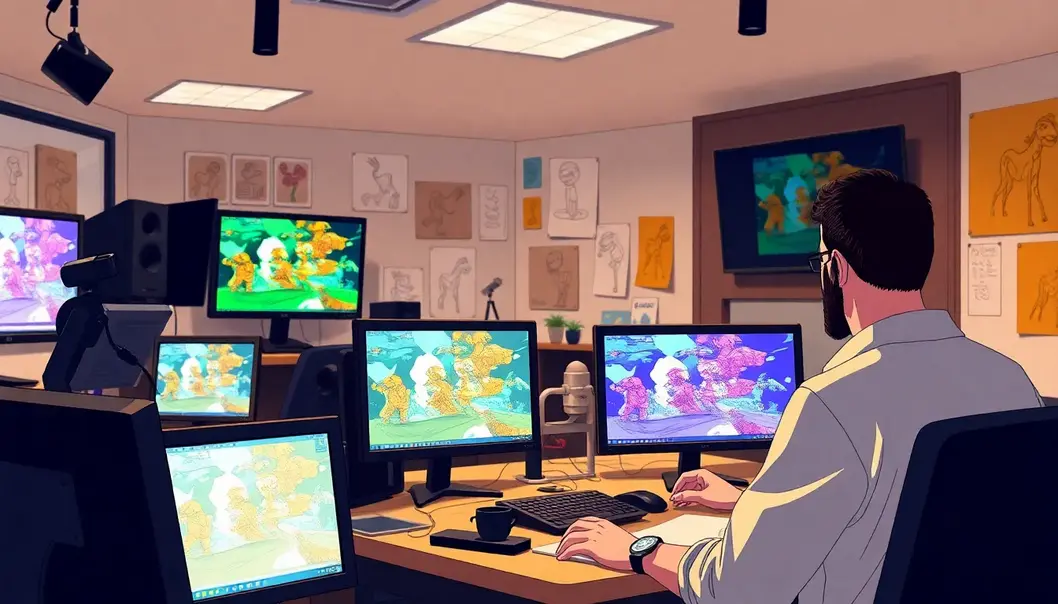Animation, a boundless creative universe, has leaped from the pages of history into today’s digital marvels. For decades, animation has been captivating audiences with its imaginative storytelling and evolving artistry. From its hand-sketched origins to today’s digital wonders, the journey spans a breathtaking landscape filled with creativity, technology, and cultural shifts. Artists and tech wizards have united to breathe life into whimsical tales and dynamic visuals, blurring the line between fantasy and reality. This exploration delves into the metamorphosis of animation through the years, highlighting legendary milestones and the crafting of iconic characters that have, undeniably, made history in the realm of animated entertainment.
The Classic Era: Hand-Drawn Magic

In the midst of the 20th century, animation established itself as a distinctly enchanting art form, primarily through intricate hand-drawn techniques. This era, often referred to as the Classic Era of Animation, saw innovators transforming simple sketches into animated wonders, captivating audiences worldwide. It was a time when creativity met craftsmanship, and the magic of hand-drawn animation started to take shape.
One of the landmark achievements of this period was Disney’s beloved film Snow White and the Seven Dwarfs. Released in 1937, this full-length feature was a groundbreaking spectacle that demonstrated the potential of animated storytelling. It was the first animated feature film made using Technicolor and set a new standard for the industry. Walt Disney’s vision propelled the project to success, blending narrative depth with visual charm that engaged audiences.
The path to crafting such masterpieces was laden with challenges. Every move, every facial expression, and every background required painstaking attention to detail. Animators worked frame by frame, meticulously drawing each scene to ensure fluidity of motion and emotional resonance. Despite the labor-intensive process, the results were nothing short of magical, offering a vibrant tapestry of fantasy and reality.
Parallel to Disney’s innovations, Fleischer Studios also made significant contributions, particularly with characters like Betty Boop and Popeye the Sailor. These characters became cultural icons, showcasing the studio’s knack for combining humor and personality in their animations. Fleischer Studios was also known for pioneering the rotoscope, a technique that allowed for smoother and more lifelike animation by tracing over live-action footage.
Hand-drawn animation of this era was not merely about entertainment; it was a reflection of societal moods and aspirations. Stories often held moral lessons or social commentaries, subtly weaving cultural narratives into the tales. This ability to connect with audiences on multiple levels made hand-drawn animations deeply impactful.
The influence of the Classic Era is undeniable, setting the foundation for future innovations while maintaining a timeless charm. Even as technology evolves, the artistry and heart evident in these early works continue to inspire new generations of animators and storytellers, underscoring the enduring legacy of hand-drawn magic.
Digital Revolution: Pixels and CGI

The digital revolution in animation marked a seismic shift from the traditional frame-by-frame craftsmanship to pixel-perfect worlds enveloped in computer-generated imagery (CGI). This transformation elevated storytelling to unprecedented heights, starting with a monumental leap in 1995 when “Toy Story” hit theaters as the world’s first fully computer-animated film. It was a collaborative masterpiece by Pixar, setting a new standard for what animation could achieve, both visually and narratively.
Pixar’s breakthrough laid the groundwork for further advancements, pushing boundaries that animation visionaries could only dream of before. The allure of CGI wasn’t merely visual; it introduced a new language of storytelling, where filmmakers could craft worlds of intricate detail and immerse audiences in dynamic environments. By harnessing pixels, animators could render textures and objects with an unprecedented level of realism, blending the gap between the fantastical and the believable.
DreamWorks soon joined the vanguard, leveraging digital technologies to create animations that mirrored the competitive vigor of Pixar but with a distinct narrative style. Their introduction of complex characters within layered universes presented a unique synergy of humor and heart, bolstered by ever-evolving CGI techniques. Audiences found themselves enchanted by animations that consistently pushed the envelope, a testament to the power and potential of digital storytelling.
The advent of sophisticated animation software further democratized the industry. Programs became more accessible to budding animators, offering sophisticated tools once reserved for major studios. This empowered artists to explore personal narratives and innovative art styles, leading to a renaissance of independent animated films.
Simultaneously, 3D animation rose as a new frontier. Expanding beyond cinema, 3D animation transformed gaming, advertising, and even virtual reality. The technology fostered an interactive digital landscape, making storytelling an experience rather than just a passive activity. This blend of technology and creativity captivated audiences, redefining engagement with animated content.
The digital age of animation reshaped not only how stories are told but also how they’re experienced. As CGI continues to evolve, it heralds an ever-expanding canvas for creativity, where the limits of constructed mythos and adventures seem as boundless as the technology itself.
Final words
From whimsical hand sketches to stunning digital landscapes, animation has continually redefined storytelling and creative expression. As the tools and techniques evolve, the heart of animation remains unchanged: its power to inspire, entertain, and connect us to a world of imagination. The future promises more breathtaking advancements and unforgettable characters, continuing the art form’s enduring legacy.
Continue your animation journey with us and delve deeper into the magic that makes your favorite worlds come alive. Discover more about animation’s rich history and future trends.
Learn more: https://www.animationinsights.com/discover-more
About us
Animation Insights offers courses and workshops for aspiring animators and enthusiasts alike, providing insights into the craft’s history and revolutionary techniques. Our expert-led sessions are designed to inspire and equip you with the skills to bring your imagination to life in the vibrant world of animation.



